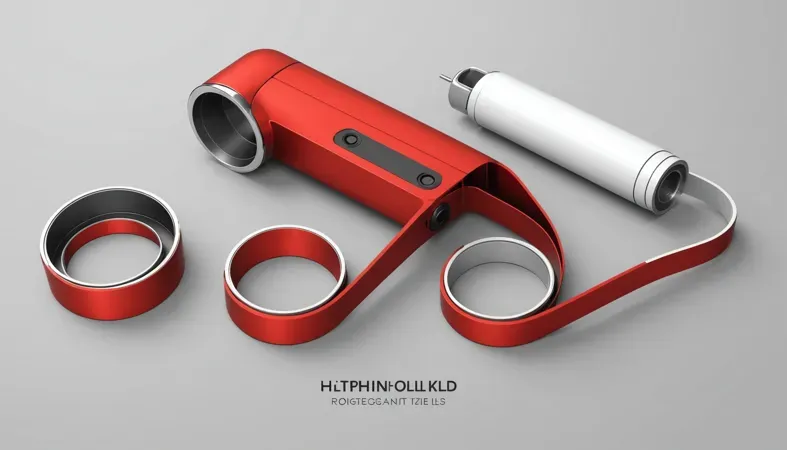How to Determine Weld Size? Key Steps, Types, and Factors
Published on: May 30, 2025 | Last modified: March 4, 2025
By: Joe Carter
Weld size refers to the amount of melted material that forms a joint between two pieces of metal. It’s crucial for the strength and stability of your weld.
One thing people often ask me about is how to determine weld size. Knowing the correct size is important. It affects the weld’s integrity and will impact safety and performance—believe me, I’ve seen issues arise from wrong sizes.
In this article, you’ll learn how to calculate weld size, the types of weld sizes, prerequisites for measurement, steps to determine weld size, and precautions to take. We’ll also cover common issues you might encounter, aftercare tips, and industry applications of weld size determination. Get ready to dive deep into what is weld size and how to decide weld size accurately.
Contents
- How to Determine Weld Size?
- What is Weld Size?
- Types Of Weld Sizes
- Prerequisites
- Steps to Determine Weld Size
- Precautions
- Types Of Weld Size Calculations
- Factors Affecting Weld Size Determination
- Assessment Methods for Weld Size
- Common Issues You Might Encounter
- Top Benefits Of Accurate Weld Size Determination
- Industry Applications for Weld Size Determination
- Alternatives for Determining Weld Size
- Frequently Asked Questions (FAQs)
- Conclusion
- References
How to Determine Weld Size?
Weld size refers to the specific dimensions of a weld. To determine weld size, you examine joint types, base metal thicknesses, and weld specifications; typically, it ranges from 1/16 inch (1.6 Mm) to 1 inch (25.4 Mm). It’s not that tough—commonly used in structural and manufacturing applications. Knowing weld size is crucial, but interpreting the different symbols associated with these dimensions can be challenging. You can enhance your understanding by learning how to read weld symbols.
What is Weld Size?
Weld size refers to a weld’s dimensions regarding strength and penetration. It typically includes width and throat thickness. For example, common weld sizes for fillet welds range from 3 mm to 25 mm (1/8 Inch to 1 Inch). According to AWS D1.1, the size must meet specified standards to ensure the weld can bear designed loads.
How do you determine weld size? It’s a mix of art and science. I consider the base material’s thickness and the stress it’ll face. Based on past experiences, choosing the correct size can prevent weld failures that halt work.
I frequently use this for my job, especially in structural steel work. Understanding the materials I’m working with can make the difference between a mediocre project and an outstanding one. Knowing how to calculate weld size is crucial. As I’ve observed, selecting the right size and following guidelines can enhance any joint’s integrity. Whether you’re filling gaps with a cover pass or reinforcing a joint, the right weld size is essential!
Types Of Weld Sizes
What are the types of weld sizes, and how do they fit into your projects?
Fillet Weld Sizes
A fillet weld forms a right angle between two metal pieces. To find its size, measure the leg length. Typically, the weld leg should be 1/4 of the thickness of the thicker plate. Refer to the AWS D1.1 chart for specific values. Understanding the preliminary steps like tack welding techniques can significantly improve weld quality.
Butt Weld Sizes
A butt weld joins two flat pieces end-to-end. To determine the size, calculate the throat dimension. Set the minimum throat size at 0.6 times the weld depth, based on the material type and thickness.
Plug Weld Sizes
Plug welds connect overlapping plates through holes. To establish size, consider the hole diameter. The diameter should be 1.5 times the thickness of the thinner plate to ensure structural integrity.
Slot Weld Sizes
A slot weld connects plates through a grooved opening. Measure the slot width; it should be at least 2.5 times the thickness of the thinner plate to maintain strength.
Arc Spot Weld Sizes
Arc spot welds connect sheets at single points. To gauge size, look at the spot diameter. It should typically be 1.5 to 2 times the thickness of the thinnest material for optimal results.
You should now have a good understanding of weld types and their sizes. In the next part, we’ll discuss prerequisites.

Prerequisites
What do you need to determine weld size?
- Welding Machine: You’ll need a reliable machine, such as the Lincoln Electric Power MIG 210MP, which handles various processes and materials effectively.
- Welding Wire: Use ER70S-6 welding wire, like Hobart H222106-R19. It’s essential for strong, clean welds on mild steel.
- Calibration Gauge: A gauge, such as the Miller Electric Weld Thickness Gauge, is crucial for accurate weld size measurements.
- Weld Test Samples: Prepare samples from 10-20 mm (0.39-0.79 In) thick steel to test your welding techniques before the real deal.
You should now have a good understanding of the necessary prerequisites for welding. In the next part, we’ll discuss how to determine weld size.
Steps to Determine Weld Size
We’ll cover the steps to calculate and select the appropriate weld size for strong joints.
Assess Joint Design
Start by evaluating the joint configuration. Determine whether you’re working with a butt, fillet, or edge weld. Each joint type has unique considerations for strength and size. Consult a fillet weld size chart for specific dimensions for your project.
In edge welds, precise alignment is crucial to ensure a proper connection and structural integrity. Understanding the nuances of edge joints can significantly enhance your welding precision. Explore how to weld an edge joint effectively for more refined results.
Understanding the joint type is crucial. The AWS D1.1 code states that the maximum size for a fillet weld can’t exceed 1/16 of the joint thickness. Diving into the specifics now saves headaches later. Before starting your welding project, setting up your equipment correctly is equally important. You can easily learn about setting up a Lincoln Electric welder to ensure precise and effective welds.
Choose Base Metal Thickness
Next, check the thickness of your base metal. For a standard weld, the weld size should be about 1/4 of the metal thickness. This provides enough strength without wasting materials. If your metal is 10 mm (0.39 In) thick, aim for a weld size around 2.5 mm (0.10 In). When dealing with thinner materials, it’s crucial to understand how to weld thin metal effectively to prevent burn-through and ensure a strong bond.
Different applications may require variations. When working with thicker plates, you may need to increase your weld size based on strength requirements. Ensure your weld size aligns with the thickness for optimal strength.
Calculate Load Conditions
Identify the load conditions your weld must handle. Calculate the forces that will act on the joint, including tension, shear, and bending. These factors influence how strong and wide your weld should be. When considering the materials and number of welding rods needed, it is important to know how many 1/8 7018 welding rods are in a pound.
Not considering the load can lead to weld failures. Take into account any specific load factors mentioned in design codes (Like AWS) for your material type. Understanding the environment for your weld is essential.
Use the Fillet Weld Size Formula
Apply the fillet weld size formula to calculate the weld size. The formula is A = 0.707 × L², where A is the weld size and L is the leg length of the weld. This helps you determine the right dimensions based on your specific weld configuration and load conditions. A calculated approach ensures you’re not over- or under-welding. For a specialized process that automates the welding of pipes and tubes, understand orbital welding.
Use resources or charts specific to your job if the math feels complicated. These can provide pre-set figures based on common standards, simplifying your decision. Accuracy here can save material and enhance joint quality.
Finalize the Weld Size
Now that you’ve calculated based on joints and loads, finalize the weld size that meets your needs. Refer to the minimum and maximum weld sizes for your application. For example, AWS specifications may dictate a minimum weld size of 5 mm (0.20 In) based on the weld type.
Double-check your values before proceeding. Selecting the proper weld size now will streamline your workflow and enhance the joint’s integrity later. Don’t underestimate this step; getting it right is vital.
So far we covered the process for determining weld size. Next, let’s look at important precautions to take.
Precautions
Let’s quickly cover essential precautions for weld sizing.
- Wear Protective Gear: Always wear gloves and a welding helmet to protect against burns. I recommend a Miller welding helmet for its visibility.
- Check Material Thickness: Measure the base material at least three times. Thickness affects weld integrity; tools like calipers ensure precision.
- Mind Ambient Conditions: Avoid windy or wet environments when welding outdoors. These conditions can hinder performance; areas should have proper ventilation.
- Review Engineering Specs: Always consult relevant codes. Following AWS (American Welding Society) specifications can prevent issues and ensure strong welds for structural safety.
Always prioritize safety; you’ve got to look out for yourself!
We covered safety measures and best practices here. Next, we will cover different methods for calculating weld sizes.
Types Of Weld Size Calculations
Let’s move on to the types. We’ll cover Flat Plate, Cylindrical Shell, Corner Joint, Edge Joint, and Joint Design.
Flat Plate Weld Size Calculation
Flat plate welds are common in large projects. To determine weld size, consider plate thickness. A typical size is about 3 mm (1/8 Inch) for a 10 mm (3/8 Inch) thick plate; the thicker the plate, the larger the weld to ensure strength!
Cylindrical Shell Weld Size Calculation
Cylindrical shells are used in tanks and pressure vessels. The weld size often depends on diameter and material type. As a rule of thumb, use a size equal to 1.5 times the plate thickness for optimal results, usually around 6 mm (1/4 Inch) for moderate sizes!
Corner Joint Weld Size Calculation
For corner joints, you usually choose a fillet weld. The ideal size is often half the thickness of the thinner plate being joined. For example, if one plate is 8 mm (5/16 Inch) and the other is 10 mm (3/8 Inch), use a 4 mm (5/32 Inch) weld — simple and effective!
Edge Joint Weld Size Calculation
Edge joints are primarily used for sheet metal. Here, weld size typically matches the thickness of the joined edges. If your sheets are 3 mm (1/8 Inch), aim for a 3 mm weld. This makes calculations straightforward and reliable!
Joint Design Weld Size Calculation
Joint design welds require a bit more finesse. The size often depends on load requirements and stress factors. It’s effective to consult design codes for these specific cases to safely determine the necessary dimensions!
Factors Affecting Weld Size Determination
What factors influence your choice of weld dimensions?
Material Type
The type of material affects the required weld size. For example, steel needs different weld sizes than aluminum due to their unique mechanical properties.
Material Thickness
As material thickness increases, weld size must also increase to ensure a strong joint. Common practice suggests a minimum of 1/8 inch (3.2 Mm) for thicker materials.
Welding Process
The welding method, such as MIG (Metal Inert Gas) or TIG (Tungsten Inert Gas), directly affects the required weld size. For instance, MIG may allow a wider bead than TIG, impacting strength and stability. Understanding these welding fundamentals is essential for achieving optimal results in any welding project.
Knowing how to construct a welding device using basic components can be advantageous in various scenarios, such as devising a welding machine with a 12V battery.
Load Requirements
Weld size must consider expected loads on the joint. If you’re facing shear or tensile loads, the weld size might need to increase; calculations ensure sufficient strength to handle those forces.
Welding Position
The welding position—flat, horizontal, vertical, or overhead—affects both technique and required size. Overhead welding often requires wider welds to ensure penetration and prevent sagging.
Assessment Methods for Weld Size
Accurate assessment techniques ensure you’re selecting the right weld size for your project.
Visual Inspections
Start with visual assessments. Use simple indicators like a caliper or welding gauge to confirm sizes. Observing for defects like undercut or overfill helps maintain quality.
Measurement Techniques
- Caliper Measurements: A caliper can measure weld size directly. For example, a digital caliper yields accuracy to 0.01 mm (0.0005 In).
- Ultrasonic Testing: This method gauges the weld’s depth and integrity. It detects flaws not visible on the surface, ensuring the weld meets thickness standards.
- Pulldown Testing: This quick test assesses the strength of the weld by applying tension until it breaks. It can prove if your weld size holds up under stress.
Utilizing Weld Size Charts
Weld size charts provide quick reference points for different materials and thicknesses. For instance, AWS D1.1 specifies sizes based on joint configurations. Here’s a quick reference table:
| Joint Type | Material Thickness (mm) | Recommended Weld Size (mm) |
|---|---|---|
| Fillet Weld | 3-10 mm | 3-6 mm |
| Butt Weld | 6-25 mm | 6-12 mm |
| Corner Joint | 4-20 mm | 4-8 mm |
| Edge Joint | 3-15 mm | 3-5 mm |
By using these assessment methods, you can ensure welds not only meet the proper sizes but also enhance project quality significantly.
Common Issues You Might Encounter
Let’s look at unique issues that can arise with weld size.
Inaccurate Material Thickness Measurement
Weld size depends on accurate material thickness. Use calipers or micrometers for precision. Double-check thickness before welding to guide your weld size.
Improper Joint Preparation
Weld size requires clean, well-prepped joints. If the surface is dirty or oxidized, weld size suffers. Clean joints with a wire brush or grinder. A proper fit is key.
Calculation Errors
Weld size relies on correct calculations. Use charts or welding calculators for accurate sizes. Double-check your figures; mistakes can weaken welds and cause noncompliance.
Inconsistency in Weld Size
Weld size can vary due to changes in settings or technique. Maintain consistent hand speed and voltage. Monitor during the weld and perform a test weld if needed for continuity.
Non-compliance With Standards
You must meet industry standards for weld size. Refer to the American Welding Society (AWS) specifications or ISO standards. Using incorrect sizes can lead to failures later.
Top Benefits Of Accurate Weld Size Determination
The biggest benefit of determining weld size? It saves time and money on materials. I’ve used it extensively in my job, especially for efficiently fabricating structures.
Additionally, precise weld sizing ensures stronger joints, reduces the risk of defects, enhances overall weld integrity, and simplifies inspections.
Industry Applications for Weld Size Determination
I’ve worked on various welding projects where determining the correct weld size was crucial. It has many applications, such as:
- Structural Steel Fabrication: Connects beams and columns, ensuring structural integrity and safety. It’s widely used in construction.
- Pipelines: Joins sections while maintaining flow pressure. It’s essential in the oil and gas industries, helping prevent leaks and failures.
- Aerospace Manufacturing: Assembles aircraft components. Precise weld size impacts weight and performance, which is vital for regulations.
- Automotive Industry: Used in body frames and exhaust systems. Proper weld sizing improves durability and meets safety standards.

Alternatives for Determining Weld Size
There are alternative methods for achieving your desired weld results. Options like using a fillet weld size chart, such as the AWS D1.1 chart, can give quick insights. Also, tools like weld size gauges provide a simple way to measure, ensuring accuracy when you need it.
I’ve found using software like DesignSpark Mechanical helps simulate weld sizes before starting. These methods can be preferred in fast-paced settings where guesswork isn’t an option. With the right tools and charts, you can confidently ensure proper weld size with minimal hassle.
Frequently Asked Questions (FAQs)
Now let us look at some common queries I typically get asked.
What is the Formula for Weld Size?
Yes, the formula for weld size involves understanding the joint design and load requirements. Designers often use the tensile strength of the materials and apply factors of safety, which can vary widely. For steel, a common rule is that the weld size should be at least 1/16 inch (1.59 Mm) for every inch (25.4 Mm) of base material thickness.
What Determines the Size Of a Weld?
Weld size gets determined by several factors including the base material thickness and the type of joint. The American Welding Society (AWS) suggests that welder integrity and load expectations play critical roles in ensuring adequate strength. For example, thicker materials often need larger weld sizes to handle loads effectively.
What is the Maximum Width Of the Weld Cover Pass?
The maximum width of the weld cover pass usually ranges from 3/8 inch (9.5 Mm) to 1/2 inch (12.7 Mm). This width should not exceed the thickness of the weld metal according to AWS guidelines. Staying within these limits can prevent issues like crack formation and ensures overall weld stability.
How Do You Determine Weld Size?
To determine weld size, you need to evaluate factors like joint design, material properties, and service conditions. A common approach involves consulting welding codes and specifications, which provide crucial guidelines and tables containing essential metrics for selecting appropriate sizes.
What is a Weld Size Measurement?
A weld size measurement refers to the various dimensions associated with a weld, including the leg size and throat. Measured in inches or millimeters, this measurement must match engineering specifications to meet strength requirements. Guideline numbers often range from 1/4 inch (6.35 Mm) and above, depending on the application.
How is the Size Of a Welding Tip Indicated?
The size of a welding tip is typically indicated by its diameter, which ensures the correct gas flow and heat input. For example, larger tips may have diameters ranging from 0.6 mm to 1.6 mm (0.025 To 0.063 Inches), suitable for heavier jobs. Choosing the right size helps maintain welded joint quality.
Conclusion
I’m glad we could cover this together. We discussed what weld size means, types of weld sizes, prerequisites for determining it, the steps involved, and factors that affect weld size. We also touched on precautions, calculations, common issues you might encounter, and the benefits of accurate weld size determination.
To sum it up, determining weld size comes down to understanding key details and measurements. You usually calculate it based on joint design, material thickness, and load requirements. Remember, proper weld size ensures strength and longevity, saving you hassle in the long run.
For more insights and the latest technical expertise on welding, visit What is Welding.
References
- American Welding Society. (2020). AWS Welding Handbook: Welding Science and Technology (Vol. 1). Miami, FL: AWS.
- American Welding Society. (2020). AWS A3.0: Standard Welding Terms and Definitions. Miami, FL: AWS.
Joe Carter is a retired welding professional with over 40 years of hands-on experience in the industry, spanning ship repair, structural welding, and even underwater projects. Joe is a master of MIG, TIG, and Stick welding. Passionate about mentoring the next generation of welders, Joe now shares his decades of expertise and practical insights to help others build rewarding careers in welding.
American Welding Society, Butt Weld, Fillet Weld, Structural Integrity, Weld Size, Welding, Welding Standards, Welding Techniques, Welding Wire







